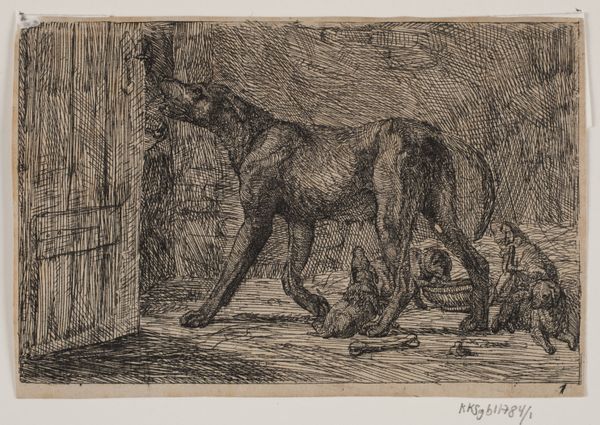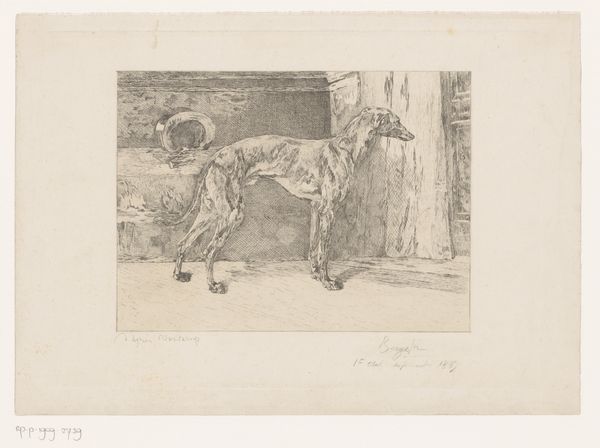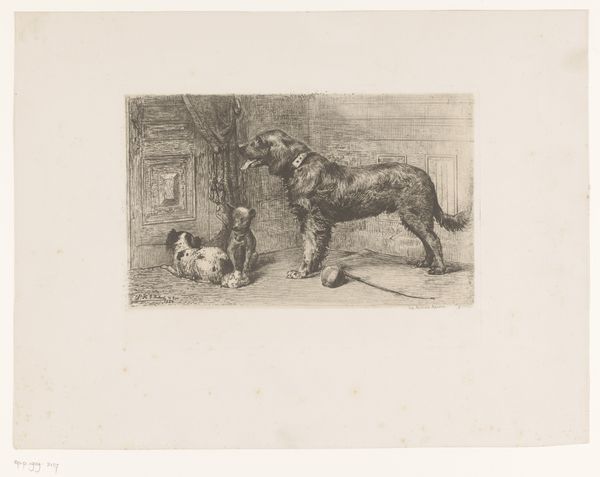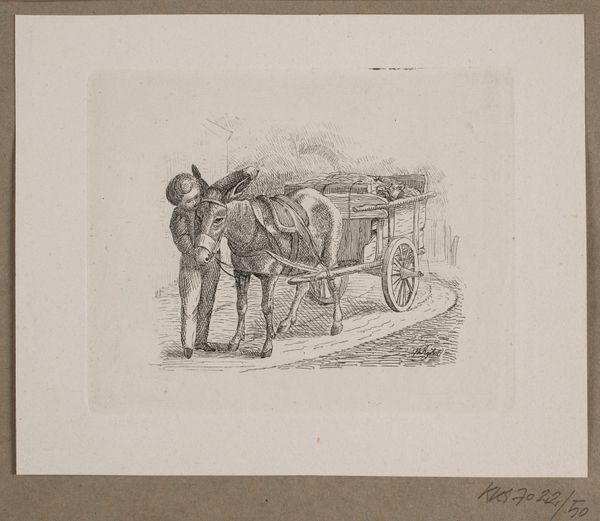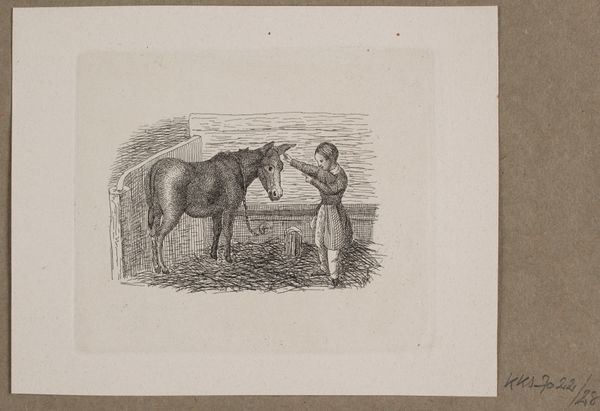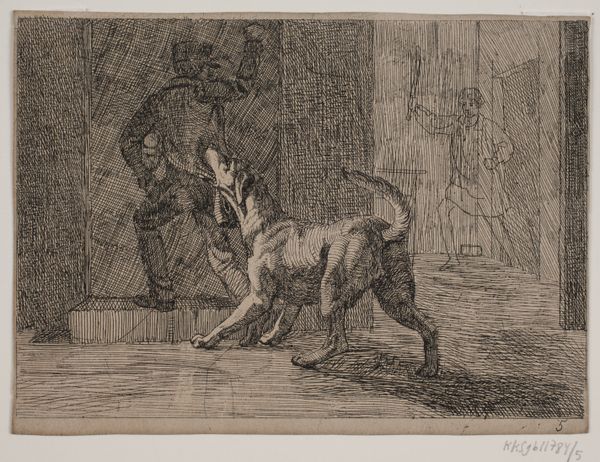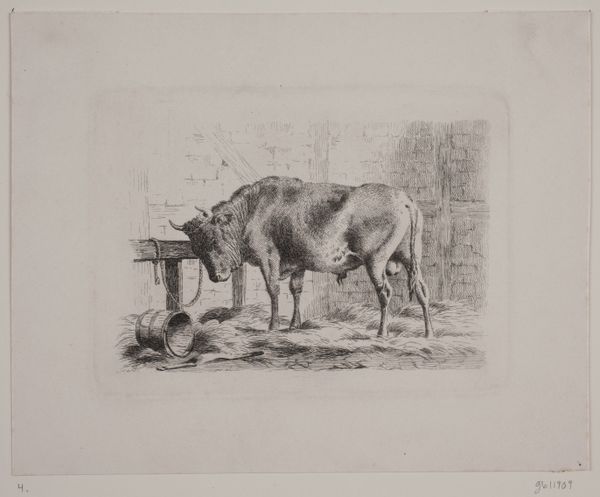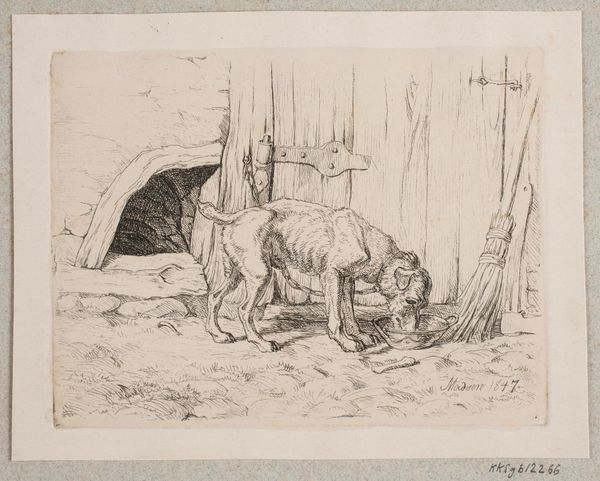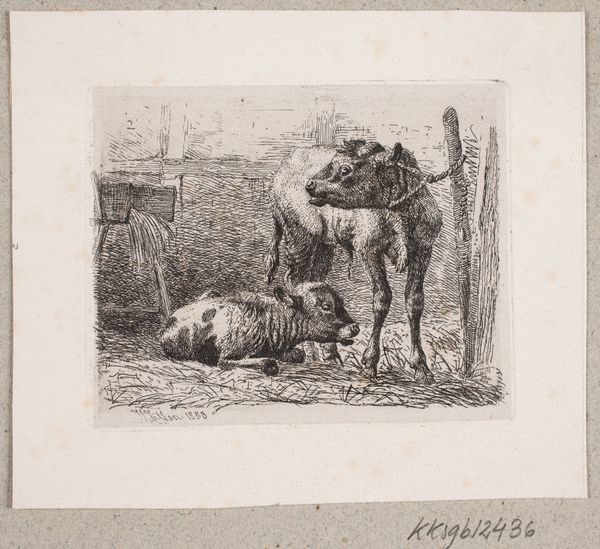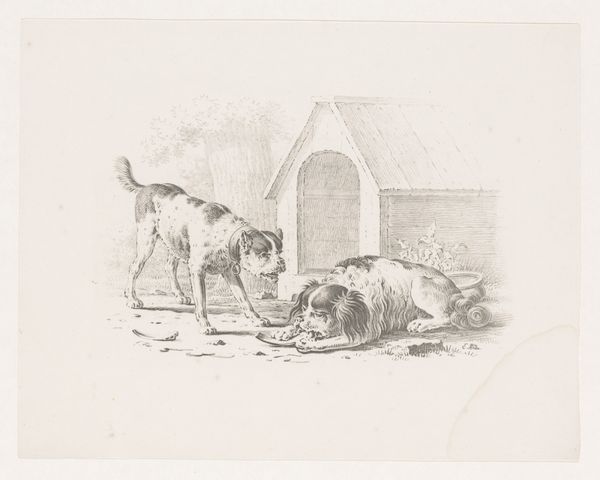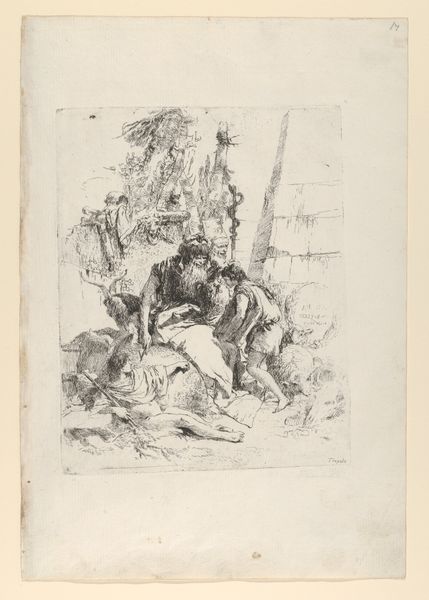
print, engraving
#
animal
# print
#
landscape
#
line
#
genre-painting
#
engraving
#
realism
Dimensions: 70 mm (height) x 100 mm (width) (plademaal)
Curator: "To Kalve," or "Two Calves," is an engraving made by Johannes Wilhelm Zillen in 1847. The piece is currently held in the collection of the SMK, the National Gallery of Denmark. Editor: My immediate impression is one of starkness. The use of line, the sharp contrast of light and shadow… it’s surprisingly emotionally affecting for what is, on the surface, a simple genre scene. Curator: Absolutely. There's a compelling vulnerability evoked through these finely etched lines. Note the animal on the left lying down as if to indicate a desire for repose. I think what makes this piece more than just a barnyard study is the potent use of realism. Editor: That "realism" you point out isn’t necessarily neutral, though. The calf standing up, seemingly tethered, prompts immediate questions about control, ownership, and agricultural practice of the time. Curator: You make a pertinent point. I agree that beyond their purely representational function the subjects hold considerable symbolic potential. In this vein I argue there is something especially enduring to consider in terms of the compositional choices—the layering and diagonal presentation of the barn wall with the implement—do these architectural forms represent larger agricultural themes and issues. Editor: For me, the work acts as a conduit into the 19th century, an era increasingly shaped by industrialization. These creatures, rendered so vividly in the unforgiving clarity of the engraved line, make me think of larger narratives about our evolving relationship with the natural world. What kind of lives will they lead? What do they mean within that world? Curator: It’s an interesting tension Zillen creates between this delicate rendering and those more pointed social questions. This image of domesticity leaves us to consider what constitutes an adequate legacy from generation to generation of keepers of life. Editor: Exactly. This wasn’t merely a decorative item, this print, in its own small way, encourages conversations about labor and freedom even today. Curator: It seems we’ve arrived at what resonates across time in Zillen's piece. He holds our attention still. Editor: And challenges us to consider our historical placement regarding those images.
Comments
No comments
Be the first to comment and join the conversation on the ultimate creative platform.


